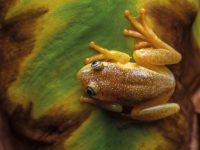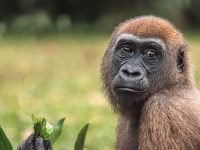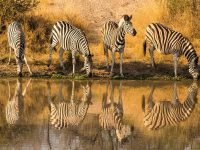Natural enemies and biodiversity
The double-edged sword of trophic interactions
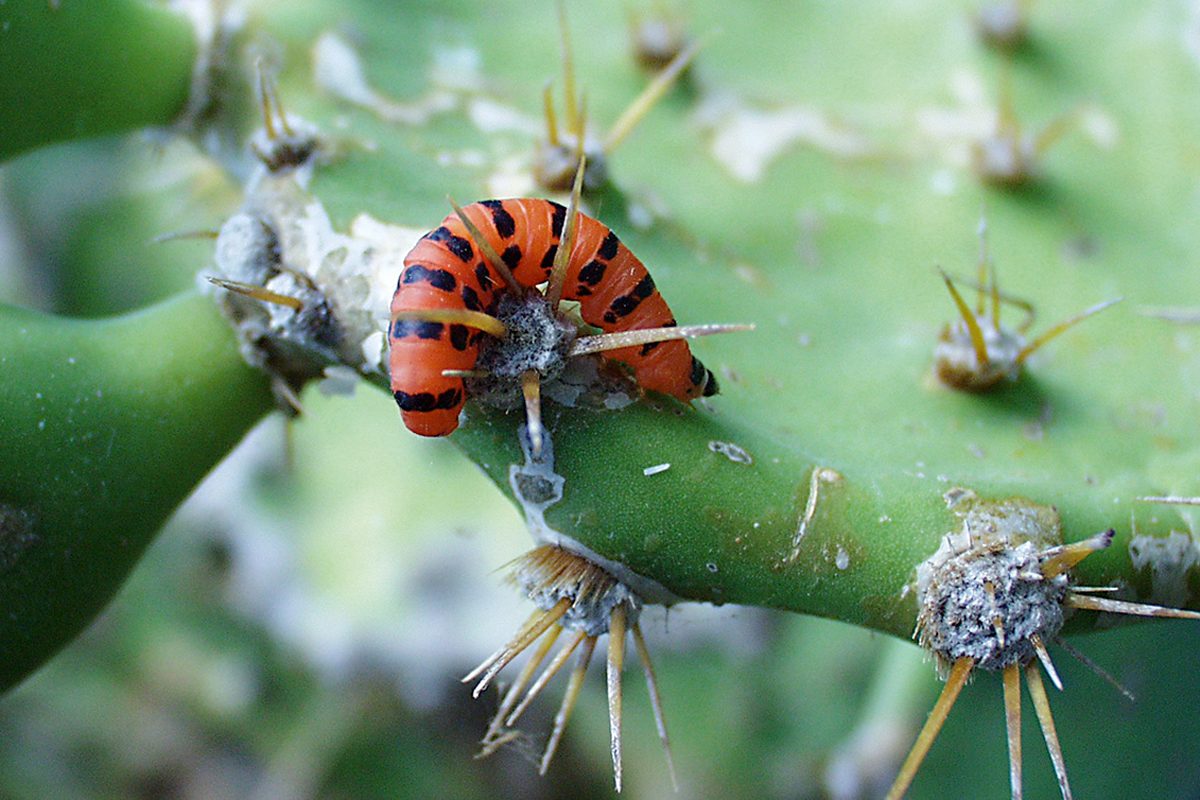
Natural enemies, that is, species that inflict harm on others while feeding on them, are fundamental drivers of biodiversity dynamics and represent a substantial portion of biodiversity as well. Along the life history of the Earth, natural enemies have been involved in probably some of the most productive mechanisms of biodiversity genesis; that is, adaptive radiation mediated by enemy-victim coevolutionary processes. At ecological timescales, natural enemies are a fundamental piece of food webs and can contribute to biodiversity preservation by promoting stability and coexistence at lower trophic levels through top-down regulation mechanisms. However, natural enemies often produce dramatic losses of biodiversity, especially when humans are involved.
Keywords: apparent competition, coexistence, ecological opportunity, enemy-victim interactions, top-down regulation.
Life feeds on life
Many living organisms on the Earth provide food for others. You can picture a horse peacefully feeding on the grass, flies trapped in spider webs, your domestic cat bringing his last bird trophy to your room, flickering television images of the elegant and fast movements of the cheetah pursuing a Thomson’s gazelle, or the impressive air jump of a great white shark catching a seal from the sea surface.
«Natural enemies are species that inflict harm on others by taking resources from them by force or stealth for their own benefits»
But even the magnificent shark is fed on by other organisms, because not only the big one eats the little one. Parasites dramatically break the constraint on relative size, feeding on often much larger hosts. The American chestnut might grow to over 35 meters, but the species has been driven to near extinction by a tiny infective fungus. All of these consumers are «natural enemies», species that inflict harm on others (their victims) by taking resources (energy and nutrients) from them by force or stealth for their own benefits (as measured in reproduction and survival). The term includes predators, herbivores, parasites, parasitoids, pathogens, and even some plants.
Natural enemies represent a substantial portion of biodiversity. What would happen if a person with enough magic power decided to remove all of the natural enemies from this world in an attempt to make it more peaceful? Probably this peaceful kingdom would prove ultimately boring to her eyes, but her feelings would not matter because her act of sorcery would also remove herself! Humans are one of the dominant top predators on the planet.
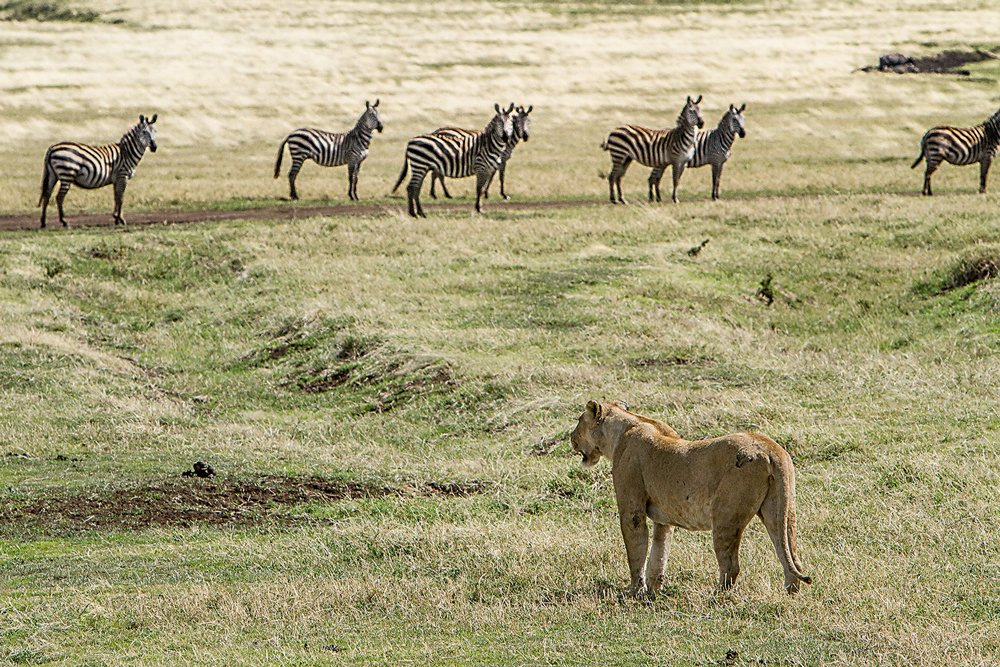
Many organisms all over the world provide food for others. In this sense, natural enemies represent a substantial part of biodiversity. In the picture, a lioness observes a group of zebras. / Avel Chuklanov/Unsplash
Parasites account for at least one third of all animal and plant species based on the most conservative estimates, and some less conservative counts consider them to comprise up to half or more of all living things. Almost every animal or plant species hosts its own parasite community. As an extreme case, the little tinamou (Crypturellus soui), which belongs to one of the most ancient bird lineages on Earth, hosts more than twenty species of lice, with up to nine species recorded from a single individual. But natural enemies are more than an appreciable portion of the biodiversity pie for they also contribute to its elaboration, preservation, stability, and, often, even reciprocally feed on the pie.
The escape and persecution game as a biodiversity engine
One of the most fascinating and productive evolutionary mechanisms of biodiversity genesis is the adaptive radiation that produces punctual explosions of a variety of life forms from a single ancestor over macroevolutionary timescales. That ancestral species diversifies into multiple different species in part due to how it experiences environmental heterogeneity (ecological opportunity; Stroud & Losos, 2016).
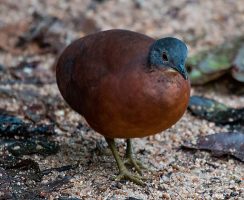
The little tinamou (Crypturellus soui), which belongs to one of the most ancient bird lineages on Earth, hosts more than twenty species of lice, with up to nine species recorded from a single individual. / Gary L. Clark
The old but powerful concept of «ecological opportunity» – crucially including novel resources – has been invoked by ecologists and evolutionary biologists to explain why and when adaptive radiation occurs. The idea helps explain the evolutionary explosions of natural enemies along the arc of Earth history. These include the diversification of phytophagous insects after the arising of flowering plants and the adaptive radiation of horses in North America during the Miocene after the appearance of grasslands – with the latter resulting in a diverse family (Equidae) displaying a wide range of body sizes and tooth morphological adaptations for grazing.
Basically, a group of organisms takes profit from the ecological opportunity of being exposed to a novel source of victims that remain still untouched by other potential enemies, so that they are the first ones to get the job offer of being enemies of the novel victims. Thus, the adaptive radiation of a taxon of victims galvanizes the diversifying response of their enemies, producing an evolutionary cascading effect through the food web (Brodersen, Post, & Seehausen, 2017).
But this is not necessarily a unilateral process. Enemies also impact the evolutionary trajectories of their victims, because victims evolve to escape. And the pressure to find an «enemy-free space» (ways of living that reduce or eliminate a species vulnerability to natural enemies) may spur further complementary radiation of the victims, followed by counter-evolution in the enemies. The classical «escape and radiate hypothesis» proposed by Ehrlich and Raven in 1964, based on butterflies and plants, provides a potential mechanism for the co-diversification of enemies and their victims. Plants evolve novel deterrent chemicals to avoid being predated by the larvae of butterflies. Then, butterflies evolve novel ways to overcome chemical defenses of their hosts. This can turn into an endless arms race of constant evolution just to «remain where you are» (the classical Red Queen hypothesis). The feedback loop of victim escape and enemy persecution results in divergent co-evolutionary trajectories, punctuated by the emergence of different plant chemical novelties and the action of reproductive isolation processes. The result is a multiple emergence of novel enemy-victim species and interactions, an intertwined double explosion of life that expands biodiversity.
Stability also comes from the roof
A Chinese proverb is that «One mountain cannot contain two tigers.» Likewise, the competitive exclusion principle states that «complete competitors cannot coexist». Roughly, it means that two species that live in the same place and «do the same thing» cannot coexist, because one of them will exclude the other by monopolizing the shared resource. Grappling with this principle has had a deep impact on the development of ecology, leading to insights which underlie much of our understanding of controls on diversity. This is because diversity means coexistence of multiple species interacting because they depend on the same basic resources, and the principle implies that there are constraints on such diversity maintenance.
«Natural enemies also impact the evolutionary trajectories of their victims, because victims evolve to escape»
The idea of competitive exclusion inspired the classical resource-based themes of thinking about mechanisms to explain the regulation of biodiversity. According to this perspective, resource limitation checks populations and forces species to compete. The primary productivity of the ecosystem – the size of the pie – determines the amount of resources available for the community. Then, coexistence mechanisms that promote diversity maintenance – how the pie is sliced – rest on ways to avoid resource competitive exclusion by partitioning resources through specialization (e.g., granivorous bird species with different beak morphologies can be adapted to exploit different seed sizes). This bottom-up (from the resources up) thinking has been pervasive in ecology. It contrasts with an alternative, top-down view that gives to natural enemies all the prominence in population and community regulation (Terborgh, 2015).
It was Paine in 1966 who opened the doors to top-down regulation with a clear message: regulation of diversity by a predator could be simple, strong, and direct. He removed the starfish Pisaster from a piece of rocky shoreline of Makah Bay in Washington State, provoking a substantial reduction in diversity of the prey community. Starfish elimination favoured the mussel Mytilus californicus, the preferred prey of the starfish and a dominant competitor. The unleashed mussel, freed from its starfish nemesis, increased in abundance, monopolized space, and displaced chitons, limpets, and barnacles by strong competitive exclusion.
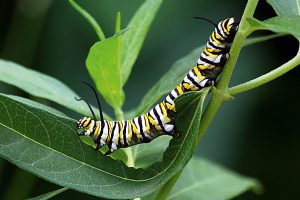
Monarch butterfly caterpillars (Danaus plexippus) capture and accumulate in their bodies the toxins generated by milkweeds (Asclepsias sp.) to protect themselves from birds and other predators, using the chemical weapons of the plants for their own benefit. This is an example of co-evolution mediated by natural enemies, with the intervention of three trophic levels (plant, butterfly, and birds). The image of a monarch butterfly caterpillar feeding on milkweed was taken by Ken Slade in the Grapevine Botanical Gardens in July 2009. / Ken Slade
Another classical example of top-down regulation is the key role of sea otters along the coastline of western North America for maintaining highly diverse kelp forests, by controlling herbivorous invertebrates to low levels. Removal of sea otters resulted in destruction of the resplendent subaquatic algal jungles by sea urchins, voracious algal grazers that are main dishes in the sea otter’s diet. The case of sea otters and urchins fits with the concept of trophic cascades and «mesopredator release». The removal of high-order predators releases natural enemies from intermediate levels of food webs, which start to thrive by devouring organisms at more basal trophic levels, with potential catastrophic impacts on diversity. The release of herbivores by absence of predators has been found to provoke drastic changes in arctic, temperate, and tropical ecosystems, underpinning the importance of top-down regulation.
In the 1970s, Janzen and Connell proposed yet another sound top-down regulatory mechanism promoting diversity, in this case driven by specialized natural enemies (attacking only one victim species), that they used to explain the exorbitant tree species diversity of tropical forests. Abundant mature trees boost in their neighborhood their own specialist fungal pathogens (i.e., which only attack a specific tree species) that feed on seeds and seedlings that trees shower beneath their canopies. Consequently, the probability of a dead tree of a common species being replaced by a conspecific is low, opening space which can be occupied by locally rarer tree species. Through this mechanism, specialist natural enemies constrain abundances of their specific victims, freeing up resources that can sustain other species. In other words, they maintain species diversity of lower trophic levels through weakening the interspecific resource competition of their victims.
More broadly, food web theory suggests that weak links can stabilize trophic dynamics. Enemy-victim interactions are often weak, especially those that involve parasitism, which are often sublethal for hosts; these can often strengthen as victims increase in abundance, thus keeping populations in check. The presence of many such weak enemy-victim interactions could stabilize communities by protecting them from destabilizing effects of strong interactions. Modern trends in ecology recognize that understanding coexistence in multispecies communities requires a multitrophic perspective and the integration of bottom-up and top-down views, where both resource competition and enemy-victim interactions interplay with symmetric roles in the regulation of species diversity (Chesson, 2012).
The friend of my enemy is my enemy
Let us paint a dark picture of a dystopian world where humans are threatened by an army of vampires that attack people during the night and spend the day hidden in the sewage system. They need additional food resources to survive the long daily sojourn in the darkness of the underground.
But they are fortunate, as they have found an alternative blood source from healthy populations of rats thriving in the sewers. We could think of rats as a kind of indirect enemy for humans, because they help vampires to thrive by overcoming the crucial daily hours of food limitation. The presence of rats in the sewers during the day increases the vampire attack rates against defenseless people resting in their beds at night.
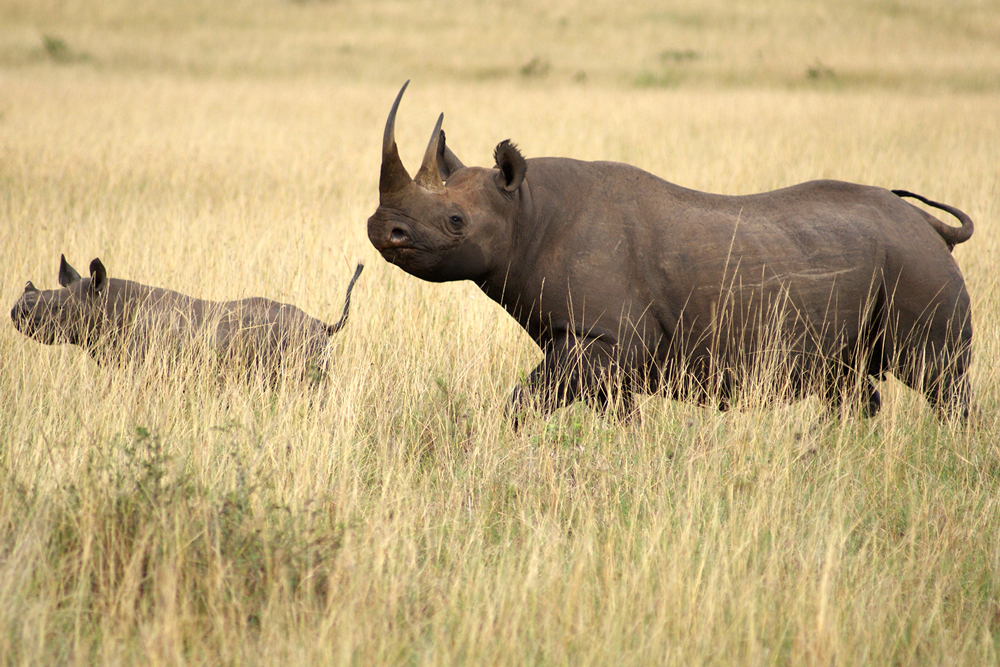
Poachers have caused the extinction of the black rhinoceros (Diceros bicornis) in Zambia despite the fact that their main target was elephants. It is an example of the impact of opportunistic hunting on biodiversity. The picture shows a black rhinoceros with its offspring on a savannah in Kenya’s Masai Mara National Reserve. The photograph was taken by Julian Mason in August 2008. / Julian Mason
This sinister example helps to illustrate the concept of «apparent competition» (Holt & Bonsall, 2017). The term was coined by Robert D. Holt in 1977, to define an indirect negative interaction between species mediated through the action of a shared natural enemy, for example a generalist predator. The basic idea is that the damage produced by a polyphagous natural enemy (vampires) on a target victim (humans) depends on the availability and productivity of alternative victims (rats). Eventually, the target victim can suffer severe reduction in numbers as a consequence of apparent competition and become locally extinct. In this case, the result might look at first glance like a case of exclusion mediated by resource competition between both victims, the reason for the concept’s name. The victims apparently compete for a shared resource but, actually, they may only indirectly interact with each other because they are harmed by the same enemy, whose effects they magnify. The outcome of apparent competition is highly sensitive to context, and can encompass both exclusion of some of the victim species or their coexistence.
The effect of sharing a natural enemy depends on the interplay of many crucial details. These include: the physiology and life history of the victims (intrinsic growth rates, phenology, and vulnerability), behavioral attributes of all species and the environmental circumstances of the enemy-victim interaction, all factors that control enemy numbers and, in general, the spatial, temporal, and community context in which the victim species occur. The complex family of indirect interactions among victims mediated by a shared predator often results in exclusion of one victim when top-down enemy effects are strong, while coexistence is less common but it can occur. For example, in some circumstances, the abundant victim attracts the predator thereby favouring the rare victim, a variant of indirect positive interaction termed apparent mutualism.
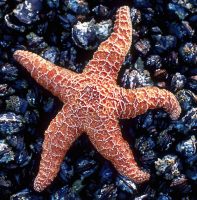
A comprehensive body of theory about indirect interaction mediated by shared enemies has been developed over the last several decades, extending its roots deeply into other fields of ecology, such as metacommunity ecology, foraging theory, invasion biology, disease dynamics, harvesting, and pest control. Apparent competition is a fundamental concept in ecology that has helped to inform a more consistent theory of coexistence mechanisms, and incorporating food web interactions more generally has substantially extended our knowledge about diversity dynamics and regulation.
When the shared enemy is biodiversity friendly
The most simple theoretical models about apparent competition predict that when attack rates of the shared natural enemy upon victims are constant, and the natural enemy is the only regulatory factor limiting each victim, one of the victims will be excluded, with the winner being the one that performs better in the presence of the shared enemy. But the simplest models contain many assumptions, such as these: enemy growth only depends on victim availability; victims do not compete between each other for resources (or for that matter engage in mutualistic interactions); and food webs contain rather few interacting species.
But reality is often more complex than abstract models, and relaxing them by the addition of realistic complexities opens the doors to a rich variety of coexistence mechanisms mediated by shared predation. We will give here a brief taste of circumstances in which victims can coexist despite sharing a common enemy, or even cases where the presence of the enemy mediates coexistence by precluding resource competitive exclusion (for more details, see Holt & Bonsall, 2017).
First of all, apparent competition results from a functional or numerical response of an enemy to an increase in abundance of an alternative victim, which in turn affects the target victim. So, if victims are limited by different resources, that is to say, they do not compete with each other (via resource partitioning), and those resources in turn maintain victim abundances low enough to preclude enemy population boosts to high levels, victims can readily coexist. Likewise, natural enemy populations can be regulated by other factors than the supply of victims, such as territoriality, availability of nesting sites or interference by other enemies (e.g., wolves attacking foxes). Such realistic factors can weaken enemy numerical responses, preventing apparent competitive exclusion of one victim by another.
«Occasionally, introduced natural enemies produce truly devastating effects on biodiversity»
Short-term coexistence may occur when the enemy has labile foraging behaviors, preferentially attacking whichever victim has higher abundance, reducing mortality inflicted on the less common species. When, in turn, the second species gets more abundant, the enemy can switch its preference, keeping that species too in check. With this behavioral lability on the predator’s part, the most vulnerable species at any given moment is always protected by the large abundance of the other (viz., apparent mutualism).
Trade-offs play a major (indeed essential) role in species coexistence. A natural enemy can promote coexistence of two victim species competing for a shared resource by forcing a trade-off, such that the best competitor is also the most vulnerable to the enemy. In Paine’s experiment, the starfish Pisaster preferentially feeds on the dominant species Mytilus californicus, exemplifying this kind of trade-off. Refuges against enemies are a key element in apparent competition, and they can be involved in coexistence (and also at times exclusion!). For example, the just mentioned trade-off between competition and resistance may occur because the competitively vulnerable victim has access to a kind of refuge not available to the best competitor.
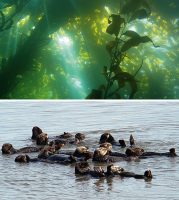
The photo on the left shows a kelp forest at Point Lobos State Nature Reserve in Carmel-by-the-Sea (Monterey, California). The sea otter (Enhydra lutris), which feeds on sea urchins, lives on the shores of Point Lobos. The sea urchin is a voracious algae eater that, if unchecked by otters, ends up eliminating kelp forests and destroying the ecosystem they support. The photo on the right shows a group of sea otters resting.
Refuge-mediated coexistence also can occur when two victims use two alternative refuges (without competing for them), protecting each from exclusion, when rare. Coexistence theory shows that being different in many ways may provide advantages permitting coexistence. A shared predator may drive evolutionary differentiation among victims. For example, some forest bird species have evolved nest-site differences when they coexist. This leads to predators being less successful when searching simultaneously for different nest types, prompting predators to concentrate their efforts on just one. With this differentiation, the coexisting victims mitigate the harmful effects of sharing enemies.
The spatial and temporal contexts also matter. The action of apparent competition may differ among habitats, leading to coexistence at broad scale through habitat segregation of victims. Two species of hares inhabit Newfoundland island off of eastern mainland Canada. But they use very different habitats. In the boreal forests, the introduced snowshoe hare extirpated the arctic hare by apparent competition, because the arctic hare is more susceptible to predation by red fox in this habitat. But the arctic hares survived in rocky refuges in the tundra where, in turn, snowshoe hare showed higher vulnerability to raptors.
Temporal dynamics are also fundamental drivers of apparent competition and mutualism, as illustrated by the extreme case of the cicadas. Seven species of the periodic cicada genus (Magicicada) coexisting in the eastern United States represent an extraordinary phenomenon of apparent mutualism. They have extremely long life cycles with periods of thirteen or seventeen years (depending on species) of latency sucking on plant roots underground. Adults that coexist locally emerge in near-perfect synchrony in a brief period of a few weeks in spring to reproduce and close the cycle, so that they satiate their shared predators (insectivorous birds) by saturating their feeding responses, thus enjoying mutual profit out of their synchronized and ephemeral emergence.
Finally, community contingencies can alter apparent competition. For example, victims impacted by polyphagous enemies undergoing mesopredation release are victims of apparent competition. The presence of higher-order predators may stabilize food webs, in part, via weakening apparent competition at lower trophic levels, because these higher-order enemies keep in check mesopredator responses to their own victims.
Enemies of biodiversity: the other edge of the sword
In previous sections, we showed how natural enemies can generate or maintain diversity over both evolutionary and ecological time scales. But, as we said, they can also feed on the pie. The generalization of Paine’s notion that shared natural enemies characteristically help to maintain biodiversity by promoting coexistence of victims is not the end of the story. This can certainly occur, but it is not at all certain that is the general rule. The basic ecology of enemy-victim interactions demonstrates that victim exclusion mediated by shared predators is a common outcome of apparent competition. Thus, natural enemies can often reduce diversity, especially in transient dynamics associated with ecosystem disturbance or invasions, where humans play a large role. A recent study reveals the damage of invasive mammalian predators (cats, rodents, dogs, and pigs), involved in 58 % of modern bird, mammal, and reptile extinctions, and threats for another 596 species currently at risk of extinction (mostly insular species; Doherty et al., 2016).
«Extinction risks may depend on complex interaction chains involving more than one natural enemy, mandating multidisciplinary solutions»
Diet supply to the generalist enemy is a potential driver of apparent competition. The additional food acts like the rat blood for our vampire tale. If you feed feral cats in a public park, be conscious that you could be damaging the local community of small mammals, birds, and reptiles that inhabit the neighborhood! The use of biological control through natural enemies to eradicate invasive species sometimes leads to unexpected and undesired effects on native biota, due to apparent competition. After a success story of biological control in Australia, the Argentinian cactus moth Cactoblastis cactorum was introduced into the Caribbean to control the invasive cactus Opuntia stricta. The cactus moth unintentionally spread to Florida Keys in 1989 where, sustained by O. stricta, it drove the endemic cactus O. spinosissima close to the extinction, and became a serious threat to the diversity of Opuntia cacti in North America.
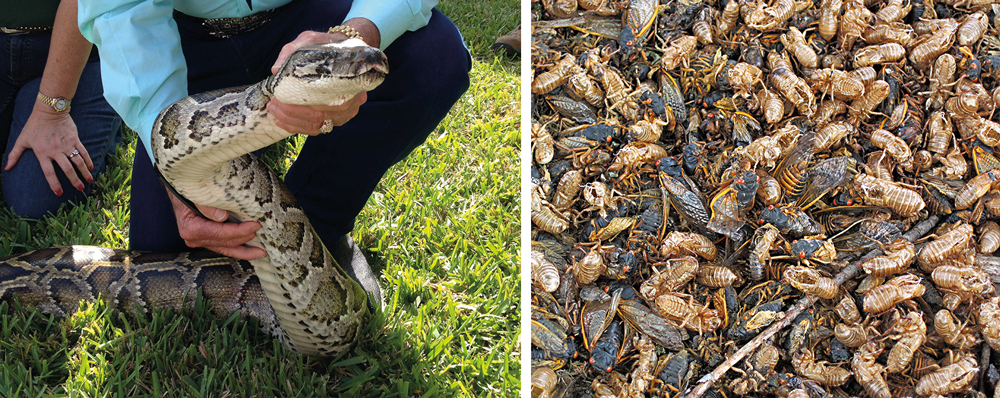
Extinction risks may depend on complex interaction chains involving more than one natural enemy, mandating multidisciplinary solutions. A singular remarkable interaction between canid diseases and human HIV threatens both the Ethiopian wolf and the African wild dog. These charismatic species are threatened by rabies and canid distemper transmitted from feral dogs that act as reservoirs of these virulent pathogens. Mortality from HIV has had devastating effects in human populations in parts of Africa, disintegrating human family units, leading to abandonment of domestic dogs, boosting the feral reservoir populations that sustain canid diseases, a dramatic chain linking a human virus and wild carnivores.
Occasionally, introduced natural enemies produce truly devastating effects on biodiversity. The brown rat snake (Boiga regularis) on Guam is one, decimating most native vertebrates. The Burmese python, Python molurus, an Asiatic snake up to seven meters in length, became established in Everglades National Park in 2000, where it has caused severe declines (>85 %) of common mammals like raccoons, opossums, and bobcats. The white nose syndrome is a novel disease affecting hibernating bats. It appeared in New York in the winter of 2006-2007, and has killed more than five million bats in eastern North America, with many species being afflicted. All of these are generalist enemies. But, undoubtedly, a hypothetical «Diversity Devourer Award» for the best generalist enemy involved in the greatest number of extinction cases would be granted to human beings.
«Human hunting has the same effects as a generalist predator permanently boosted by common preys»
Human hunting has the same effects as a generalist predator permanently boosted by common preys. Our species is omnivorous, not sustained just by animals, but by calorie-rich plants as well. Mass extinctions of North American large mammals during the Quaternary driven by human hunting are probably an example of apparent competition in action. Nowadays, endangered species can be overexploited until their complete extirpation because non-selective hunting activities are sustained by common alternative species that make economically viable the opportunistic capture of the increasingly scarce species that, otherwise, would be protected by its rarity. As Branch et al. say, opportunistic exploitation is «an overlooked pathway to extinction» (Branch, Lobo, & Purcell, 2013). We should not be proud of the «DD Award», and our acquired knowledge about the looming impact of indirect interactions such as apparent competition can – we hope – help us to mitigate the impacts that our role as generalist enemies is having on the biodiversity of our planet.
REFERENCES
Branch, T. A., Lobo, A. S., & Purcell, S. W. (2013). Opportunistic exploitation: An overlooked pathway to extinction. Trends in Ecology & Evolution, 28, 409–413. doi: 10.1016/j.tree.2013.03.003
Brodersen, J., Post, D. M., & Seehausen, D. (2018). Upward adaptive radiation cascades: Predator diversification induced by prey diversification. Trends in Ecology & Evolution, 33, 59–70. doi: 10.1016/j.tree.2017.09.016
Chesson, P. (2012). Species competition and predation. En R. Lemans (Ed.), Ecological systems (pp. 223–256). New York: Springer. doi: 10.1007/978- 1-4614-5755-8
Doherty, T. S., Glen, A. S., Nimmo, D. G., Ritchie, E. G., & Dickman, C. R. (2016). Invasive predators and global biodiversity loss. Proceedings of the National Academy of Sciences, 113, 11261–11265. doi: 10.1073/ pnas.1602480113
Holt, R. D., & Bonsall, M. B. (2017). Apparent competition. Annual Review of Ecology, Evolution, and Systematics, 48, 447–71. doi: 10.1146/annurev-ecolsys-110316-022628
Stroud, J. T., & Losos, J. B. (2016). Ecological opportunity and adaptive radiation. Annual Review of Ecology, Evolution, and Systematics, 47, 507–32. doi: 10.1146/annurev-ecolsys-121415-032254
Terborgh, J. T. (2015). Toward a trophic theory of species diversity. Proceedings of the National Academy of Sciences, 112, 11415–11422. doi: 10.1073/pnas.1501070112


